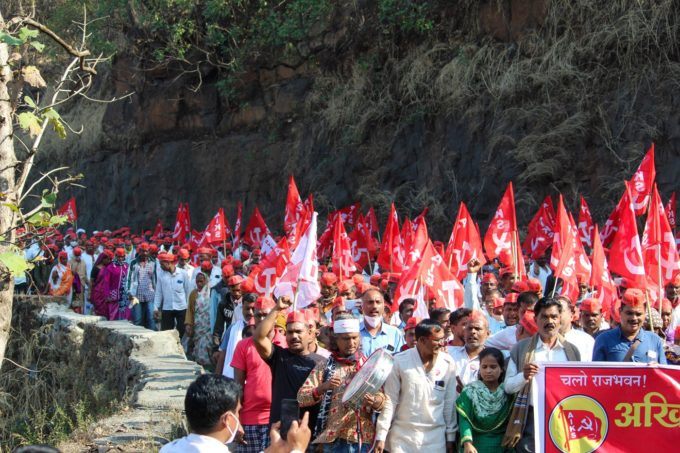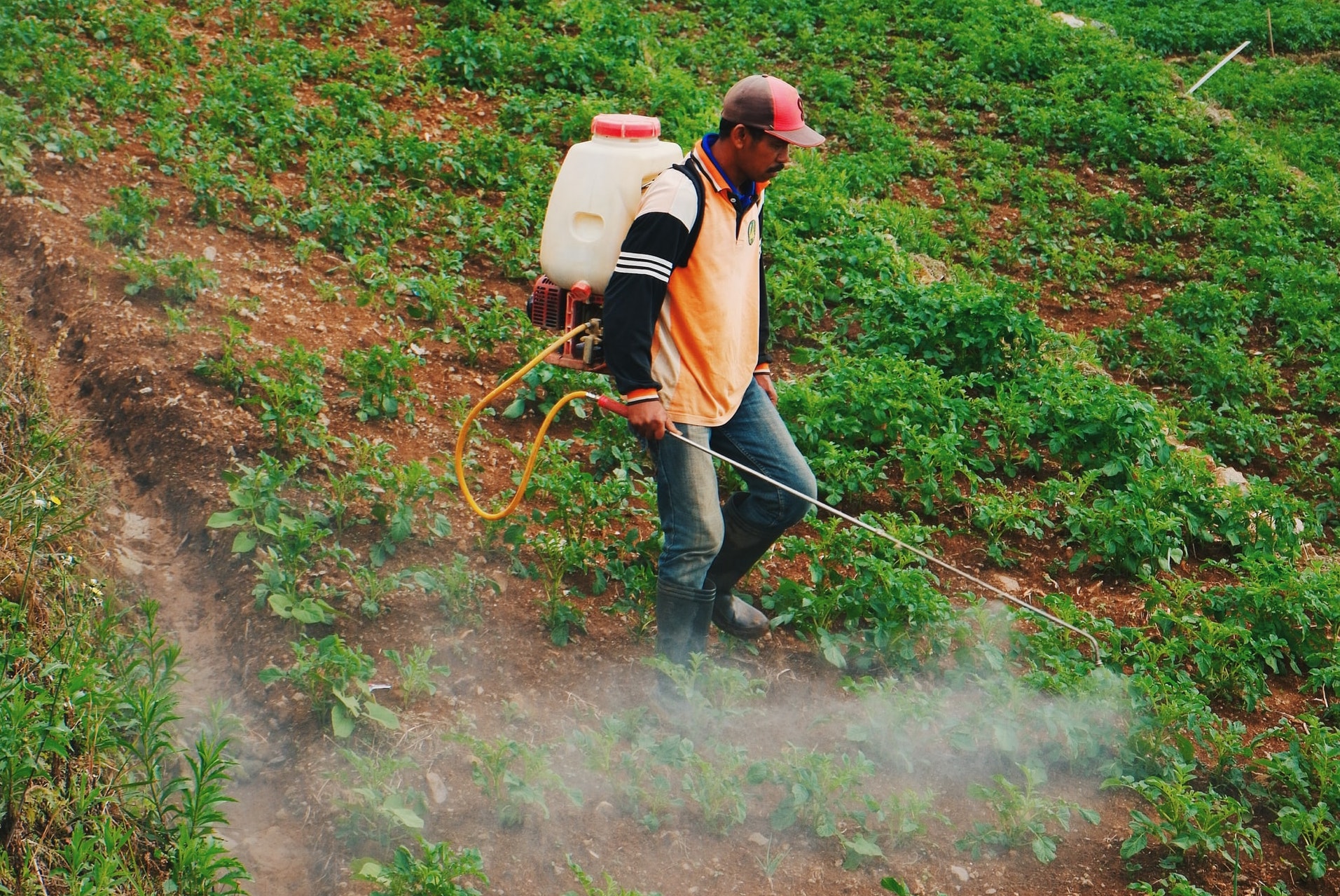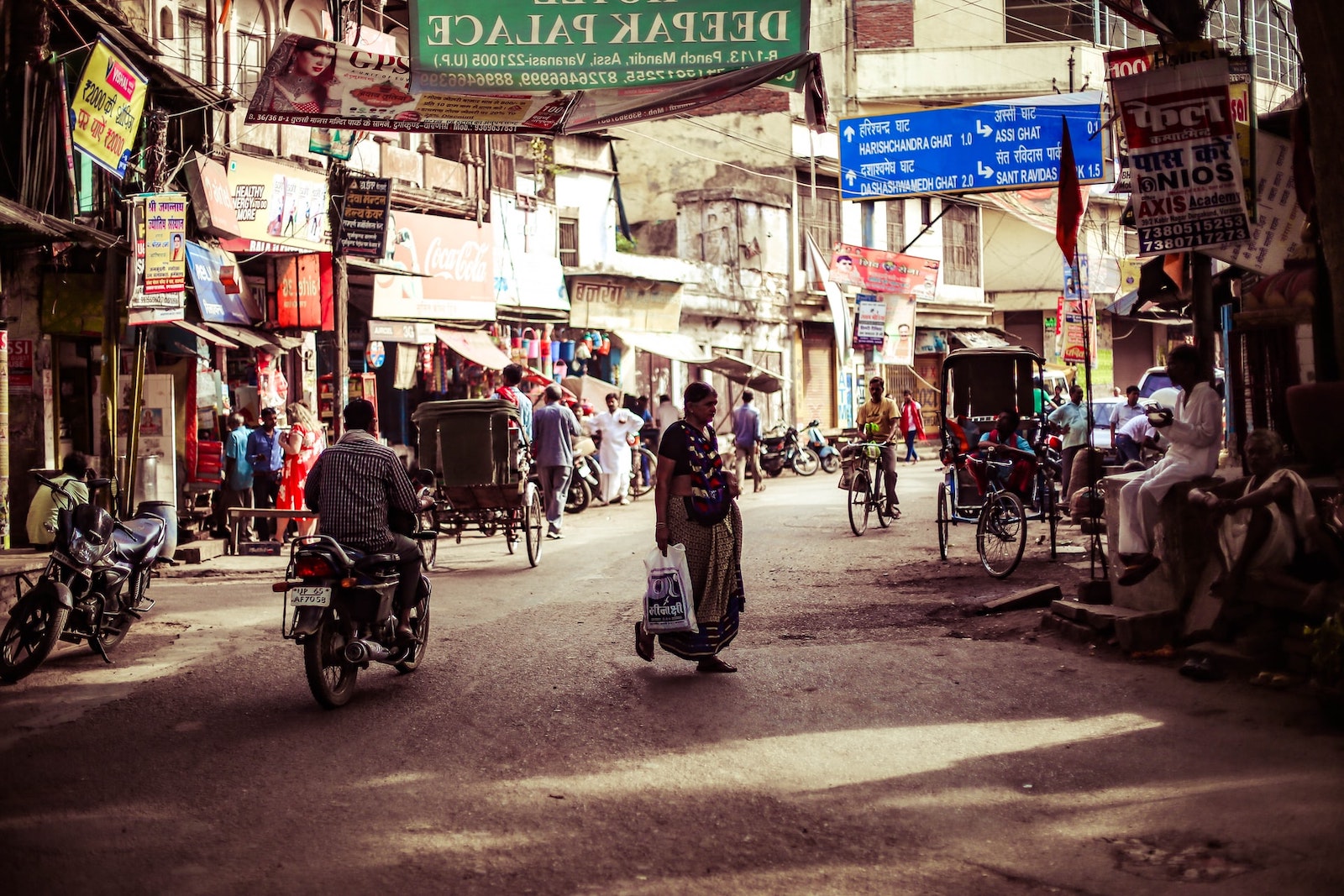
by DGR News Service | Oct 6, 2021 | Culture of Resistance, Human Supremacy, Indigenous Autonomy, Indirect Action, Mining & Drilling, NEWS, Protests & Symbolic Acts, The Problem: Civilization, The Solution: Resistance
Editor’s note: The industrial civilization always prioritizes access to “resources” over rights of indigenous people. DGR believes that those in power break laws when it suits their interest. We stand in solidarity with indigenous struggles to protect their landbase.
This article originally appeared in Survival International.
Hundreds of tribal villagers from India’s Hasdeo Forest begin a rally and march tomorrow in protest at the government’s plans for a massive expansion of coal mining on their lands.
People from Adivasi (Indigenous) communities who live in the forest – which, at 170,000 hectares, is one of the largest intact areas of forest in the country – will rally on Gandhi’s birthday (October 2), then march 300km to the capital of Chhattisgarh state from October 4-13.
The Hasdeo Forest is the ancestral home of approximately 10,000 Adivasis belonging to the Gond, Oraon, Lohar, Kunwar and other peoples. It is also one of India’s richest and most biodiverse regions.
Indian Prime Minister Modi’s government is aggressively promoting a plan to open new coal mines in the area. The forest and its peoples would be destroyed if the mines go ahead.
Across India Modi intends to open 55 new coal mines and expand 193 existing ones, to increase coal production to 1 billion tonnes a year. Coalfields are being auctioned off to some of India’s biggest mining corporations, including Adani, Vedanta and Aditya Birla.
Much of the existing government plan is illegal, as mining in Adivasi land should not proceed without their consent. Across India Adivasis are deeply opposed to the mines, having seen first-hand how existing mines have destroyed forests and the communities that lived in them.
Adivasi people across India have been resisting mining for decades, including by blocking bulldozers and peacefully protesting. Many have been arrested, beaten and even murdered in response.
In a public declaration from the “Resistance Committee to Save Hasdeo Forest” (Hasdeo Aranya Bachao Sangharsh Samiti) the Adivasis said:
The federal and the state government, instead of protecting the rights of us tribal and other traditional forest dwellers have joined hands with mining companies and have been working towards devastating our forest and land.”
“We are bound to resist and [march] to safeguard our water, forest, land and our livelihoods and culture that are dependent on them. We appeal to all citizens who love the Constitution and Democracy, all who are committed to safeguard the waters, forests, land and environment and all sentient citizens to join us in this gathering and the march.”
Survival International Director Caroline Pearce said today: “The extent of the coal mining now planned will not only destroy Indigenous homes, lands and livelihoods on an unimaginable scale, it also makes a mockery of Modi’s claim to be at the forefront of addressing the climate crisis. Supporting the Adivasi resistance to coal mining should be a global priority.”
Photo by Amir Arabshahi on Unsplash

by DGR News Service | Feb 11, 2021 | Agriculture, Education, Movement Building & Support, Noncooperation, Protests & Symbolic Acts, Worker Solidarity
Editor’s note: DGR strongly opposes the three new farm laws that have inspired the farmer’s protests in India. However, we do not necessarily agree with all of the demands of the protestors.
This article original appeared on the People’s Archive of Rural India on January 28, 2021. Written By Shraddha Agarwal.
Featured image by the Author
“We borrowed a 1,000 rupees from the seths [farm owners] to come here. In return, we will work in their fields for 4-5 days,” said Vijaybai Gangorde, 45.
She arrived in Nashik on January 23 at noon, in a tempo painted blue and orange – one of the first to reach the Golf Club Maidan in the city, to join the vehicle jatha (march) to Mumbai.
Vijaybai’s 41-year cousin, Tarabai Jadhav, was also travelling with her from Mohadi, their village in Nashik district’s Dindori taluka. They both work as farm labourers there for a daily wage of Rs. 200-250. The cousins came to Nashik to join other farmers – about 15,000 from mainly Nanded, Nandurbar, Nashik and Palghar districts of Maharashtra – going to Mumbai’s Azad Maidan, about 180 kilometres away, to protest against the new farm laws.
“We are marching for our upajivika [livelihood],” said Tarabai.
A sit-in and a march to Raj Bhavan, the Governor’s residence, in south Mumbai have been organised by the Samyukta Shetkari Kamgar Morcha on January 25-26, to express solidarity with the protesting farmers at Delhi’s borders. Farmers from 21 districts of Maharashtra, assembled together by the All India Kisan Sabha (AIKS), are gathering in Mumbai for these protests.
For over two months, lakhs of farmers, mainly from Punjab and Haryana, have been staging protests at five sites on the borders of Delhi. They have been protesting against three farm laws that the central government first issued as ordinances on June 5, 2020, then introduced as farm bills in Parliament on September 14 and hastened to become Acts by the 20th of that month.
The laws are: The Farmers’ Produce Trade and Commerce (Promotion and Facilitation) Act, 2020; The Farmers (Empowerment and Protection) Agreement on Price Assurance and Farm Services Act. 2020; and The Essential Commodities (Amendment) Act, 2020.
The farmers see this legislation as devastating for their livelihoods by expanding the space for large corporate to exercise even greater power over farming. They also undermine the main forms of support to the cultivator, including the minimum support price (MSP), the agricultural produce marketing committees (APMCs), state procurement and more. The laws have also been criticised as affecting every Indian as they disable the right to legal recourse of all citizens, undermining Article 32 of the Indian Constitution.
Vijaybai and Tarabai, who belong to the Koli Malhar Adivasi community, a Scheduled Tribe, paid Rs. 1,000 each for a seat in the hired tempo to Mumbai and back. They borrowed the amount because they had no savings. “We had no work during the [Covid-19] lockdown,” said Tarabai. “The state government had promised 20 kilos of wheat free for each family, but only 10 kilos was distributed.”
This is not the first time that Vijaybai and Tarabai are marching in protest.
“We had come on both the marches – in 2018 and 2019,”
they say, referring to the Kisan Long March from Nashik to Mumbai in March 2018, and the follow-up rally in February 2019, when farmers voiced their demand for land rights, remunerative prices for produce, loan waivers and drought relief. It is also not the first jatha from Nashik to protest against the new farm laws. On December 21, 2020, around 2,000 farmers had collected in Nashik, of which 1,000 set out to join their northern counterparts on the outskirts of Delhi.
“The only way we Adivasis can be heard is by marching [for our rights]. This time, too, we will make our voices heard,”
said Vijaybai, making her way with Tarabai to the centre of Golf Club Maidan, to listen to the speeches of AIKS leaders. After all the vehicles had assembled, the convoy left Nashik at 6 p.m. that evening. At Ghatandevi temple in Igatpuri taluka, Nashik district, the marchers halted for the night. Many of them had packed a simple meal – bajra rotis and garlic chutney – from home. After dinner, they spread out thick blankets over tarpaulin sheets on the ground beside the temple and fell sleep.
The next day, the plan was to walk down the Kasara ghat near Igatpuri and reach the Mumbai-Nashik highway.
As they prepared to leave at 8 a.m., a group of farm labourers discussed their children’s future in the agriculture sector. “Even though my son and daughter have both completed their degrees, they’re working on farms for a meagre income of Rs. 100-150 [per day],” said 48-year-old Mukunda Kongil, from Nandurkipada village in Trimbakeshwar taluka, Nashik district. Mukunda’s son has a BCom degree, and his daughter has done a BEd, but they both work as farm labourers now. “The jobs go only to non-Adivasis,” says Mukunda, who belongs to the Warli (or Varli) Adivasi community, a Scheduled Tribe.
“My son worked so hard in his college and now he works on farms every day,” said 47-year-old Janibai Dhangare, also a Warli Adivasi from Nandurkipada. “My daughter finished her pandhravi [Class 15, that is, a BA degree]. She tried to get a job in Trimbakeshwar, but there was no work for her. She did not want to leave me and go to Mumbai. That city is too far and she will miss home-cooked meals,” she said, packing away her leftover bhakris and loading her bag into the tempo.
The farmers and farm labourers walked for 12 kilometres from the ghat to highway with their flags, raising slogans against the new farm laws.
Their demand is for a repeal of the three laws as well as of the new labour codes, while also seeking a law to guarantee remunerative minimum support prices (MSP) and countrywide procurement facilities, said AKIS president, Ashok Dhawale. “This march is an important contribution to the historic nationwide struggle of lakhs of farmers in Delhi and all over the country against the neoliberal and pro-corporate policies of the central government,” said Dhawale, who is travelling with the group.
Upon reaching the highway, the farmers took their places in the vehicles and proceeded towards Thane. Along the way, various organisations supplied them with water bottles, snacks and biscuits. They stopped for lunch at a gurudwara in Thane. It was 7 p.m. on January 24 when the jatha reached Azad Maidan in south Mumbai. Tired, but with their spirits intact, some farmers from Palghar district entered the ground singing and dancing to the tune of the tarpa, a traditional Adivasi wind instrument.
“I am hungry. My whole body is hurting, but I’ll be fine after some food and rest,” said Vijaybai, after settling down with her group of farm labourers. “This is not new for us,” she said. “We have marched before and we will march again.”
Shraddha Agarwal is a reporter and content editor at the People’s Archive of Rural India

by DGR News Service | Jan 17, 2021 | Agriculture, Protests & Symbolic Acts
This news article describes the impact of corrupt legislation on ordinary working people. The organised protests and solidarity of the public with farmers is an excellent example of how coordinated resistance can enable change.
Editor’s note: DGR strongly opposes the three new farm laws that have inspired the farmer’s protests in India. However, we do not necessarily agree with all of the demands of the protestors.
By Salonika/DGR Asia-Pacific
On 12th January, 2021, the Supreme Court of India suspended the ‘Three Contentious Farm Laws, amidst large scale protests from farmers in India. The three farm laws continue to be hailed by the ruling party as a means on giving farmers more autonomy over selling of their crops and will break big monopolies. Yet, it is the farmers who have mobilized and organized the mass-scale protests against the laws.
Resistance against the farm bills has been mainly organized by farmer’s unions, ongoing across different areas of the country, since the bills were first introduced. The protests intensified after the bills were passed by the parliament and signed by the President in late September. At the time of writing this, thousands of farmers are on the streets, demanding central government repeal the three acts. In the past five months, about 70 protestors have lost their lives to heart attacks, cold, accidents and suicides.
What does the laws mean for the farmers?
State governments in three states of India – Punjab, Haryana and Rajasthan – have established a marketing board (APMC). Under this system, the first sale of agricultural produce (i.e. from the farmer to the middlemen) could happen only in the mandis (market yards) of APMC. The mandis in turn operate under a Minimum Support Price (MSP) system that ensure certain crops are sold at a minimum price set by the government at the beginning of the season.
By ensuring a minimum price for their produce, The APMC and MSP system act as a safeguard for farmers, against unexpected price drops, as well as exploitation by large retailers or local moneylenders.
Farmers’ Produce Trade and Commerce (Promotion and Facilitation) Act, one of the new laws, remove the APMC system, and allow for sale of agricultural produce to private buyers without any government oversight. While the ruling party claims that this would liberate the farmers to sell their produce to the highest bidder, the farmers fear otherwise.
The direct dealings of farmers with large retailers will put the farmers in a vulnerable position No laws in India or any of the states consider the MSP system to be legally enforceable. The new laws also do not mention MSP in regards to direct dealings with retailers, and will likely dismantle the MSP system. Although the members of ruling party have verbally assured that the system will be intact, the farmers have demands a more formalized pledge to the continuity of MSP.
What if farmers are exploited?
On top of that, certain sections of the laws strip citizens’ right to legal recourse. One law grants complete immunity for any act performed in the process of implementation of the law as long as the act was performed in “good faith.” Another strips civil courts of jurisdiction over proceedings related to the laws. The judicial power is transferred to new institutions created by the laws, which will remain under the executive control.
In effect, anyone who can claim to be acting in “good faith” in their implementation of the rules could easily acquire legal immunity, with little to no consequences for their actions. A study of the impacts of deregulation policies across the world clearly demonstrate that it is the corporations who will enjoy this impunity, while the so-called beneficiaries of the policies (in this case, the farmers) will be further repressed under corporate control. It is clear for everyone to see that this ‘gift of legislation’ offers working people zero protection and could cause significant harm.
Responses to the protests
The protests have received overwhelming support from the public, celebrities, and even opposition parties. Whilst the motives behind the latter’s support are, of course, contentious, it is at this time welcome given what is at stake. Incredibly, approximately 250 million people participated in a nationwide general strike organized by farmer unions on November 26, 2020.
Unsurprisingly, from the governmental side, the peaceful protests have been met with water cannons, batons, tear gas, barricades and sand barriers to stop the protestors from crossing state borders. A youth who turned off a police water cannon, being used against the protestors, was later charged with attempted murder.
The members of the ruling party have used a number of tactics to discredit the organizers. Baseless accusations that the movement is led by “privileged” farmers, or secessionists, or even terrorists have been made and reported by the mainstream media.
Need for radical changes
The new laws will render the farmers vulnerable to big businesses. However, these are not the only problems that farmers in India have faced. It is estimated that ten farmers kill themselves everyday.
Majority of the problems that the farmers face can be traced back to the 1960s when India became an experimental ground for the Green Revolution, which introduced hybrid seeds, monoculture, chemical fertilizers and pesticides in India. The results of the experiments are horrifying.
In Punjab (ground zero of the Green Revolution in India), pesticide residues were found in a quarter of breast milk samples in 2014. “Cancer trains” carry pesticide related cancer victims from Punjab to Rajasthan. Farmers’ suicides (considered a national catastrophe) is a result of the increasing spiral of debt that the farmers cannot escape from. Testimonies of a few of the protesting farmers shows that a majority of their expenses is spent on pesticides and fertilizers.
The movement against the new farm laws are a significant blow to the exploitative and oppressive system. The farmers can build on this movement to reverse the devastating effects of the Green Revolution.
The food sector of India (as it is now) serves no one in the longer term. The food producers are trapped in inescapable spirals of debt. The consumers are ingesting toxins in their bodies. The landbase upon which we depend is getting poisoned by chemical toxins. Aquifers have started drying out. The diversity of crops and plants in India have been lost
This should be replaced by a system that serves both the ecology and the local communities should be established, through reindigenization of agriculture practices` and localization of food production.
For more information on the protests, check out the official website of Ail India Kisan Sabha, and this open letter of solidarity` for the farmers.
Salonika is an organizer at DGR Asia Pacific and is based in Nepal. She believes that the needs of the natural world should trump the needs of the industrial civilization.
Featured image: Ted Eytan

by DGR News Service | Dec 16, 2020 | Agriculture, Biodiversity & Habitat Destruction, Toxification
By Salonika
The Green Revolution is a misnomer: it sounds like a radical environmental movement when it’s the exact opposite of that. It is a movement led by corporations (including the Ford Foundation and the Rockefeller Foundation) to further reinforce the class-based heierarchy, while spreading an ecocidal practice across the world.
The Green Revolution has promoted the use of synthetic fertilizers and pesticides; hybridized seeds and high yielding crop varieties; expansion of irrigation infrastructure, and modernization of management techniques. It started in late 1950s and has been credited as the movement that saved the world from mass starvation. (The mass starvation seemed imminent due to the human population overshoot. The population was 3 billion at the time and since then has increased by more than 5 billion – an almost threefold increase!) Norman Borlaug, the father of Green Revolution, was awarded the Nobel Peace Prize in 1970 for saving a billion people from starvation.
Currently a second wave of Green Revolution is on the way. Influential people like Bill Gates are pushing the use of Genetically Modified Crops (GMOs) in countries of Africa as a new solution to the upcoming starvation.
This is the dominant narrative regarding the Green Revolution. There are some important points missing from this perfect little story.
Lets delve into the history of the agricorporations first.
The agricultural corporations have an intertwined history history with the wars. During World War II, the agricultural corporations (then chemical corporations) produced explosives and poisons. Monsanto operation the Dayton Project and the Mound Laboratories, and was involved in the development of the first nuclear weapons. During the Vietnam War, Monsanto also poisoned Vietnam, Cambodia and Laos with Agent Orange. The effects on human health and ecology can be felt to this day.
The war legacy of these corporations extends beyond this. According to the Nuremberg War Crimes Tribunals, Bayer had purchased 150 healthy women from the Auswitch concentration camp for experiments with sleep-inducing drugs. All of these women died during the experiments.
It is hard to believe that the companies that had no qualms in actively profiteering from wars, conducting war crimes, or purchasing humans, would simultaneously be sensitive to the sufferings of humanity. These corporations have proven time and again that they are willing to poison and exploit the oppressed (the poor, the women, those from the Global South) in pursuit of profit. It is ironical that proponents of GMOs use images of starving children in Africa to build a case in favor of these corporations.
Lets take a case of the state of Punjab in India.
The Green Revolution was introduced in Punjab in 1965. It has been credited for pulling India out of starvation.
In reality, there was no starvation in India in 1965.* A nationwide drought had increased the food prices, creating a need to import food grains. However, the US government and the World Band imposed a condition on the import of food grains and forced synthetic fertilizers and pesticides, and genetically redesigned crops to the farmers of Punjab. These synthetic fertilizers and pesticides were produced using the same chemicals that had been used to produce poisons and explosives during the Second World War. Native crops all over rejected these chemicals. So, the agriculture corporations genetically altered crops so that they would accept (and be dependent on) the synthetic chemicals. These crops later became known as the high yielding varieties and the hybridized seeds.
The Green Revolution has had serious implications in Punjab. The native biodiversity has been destroyed. Once, Punjab used to produce 41 varieties of wheat and 37 varieties of rice. Since the Green Revolution, all of this has been replaced by monocultures of imported crops.
These crops require further use of chemicals. It has toxified the entire ecology. A 2014 study found pesticide residue in 25% of breast milk sample collected from Punjab. In a culture where breast milk stands for purity and love of a mother for her child, a quarter of mothers cannot express this love toward their infants without simultaneously poisoning them.
The number cancer cases are so high in Punjab that a special train carries people suffering from pesticide-related cancer to Rajasthan (another state in India). This train is called the “cancer train.”
Technology transfer or wealth transfer?
The Green Revolution has been credited for technology transfer from the corporations to the farmers. In fact, it has resulted in a massive wealth transfer from farmers to corporations. The farmers in India are dying from an inability to pay the massive loans they have accrued. Since the 1990s, farmers suicide has been a national catastrophe in India. It is estimated that more than 10 farmers commit suicide every day. Ironically, or perhaps symbolically, most kill themselves on their fields by drinking pesticides.
I was once asked why the movement is called the Green Revolution. I said, “Because poison-your-land movement would have sounded less appealing.” It would definitely have been more accurate though!

by DGR News Service | Oct 23, 2020 | Male Supremacy, Rape Culture
In this piece (cross-posted from Counterpunch), Cesar Chelala connects the increase in rapes with the sex-based violence women face in India.
by Cesar Chelala / Counterpunch
It is difficult to reconcile India’s rapid economic and technological development with brutal practices that, in many cases, lead to the death of women and girls. Repeated incidents of gang rape in India are not isolated, but reflect widespread gender and caste discrimination in the country. Today, rape is the fourth most common crime against women in India.
Two recent gang rapes resulting in the deaths of Dalit women have shocked people around the world. Both women were young, one 19 and the other 22-years-old.
In India, 200 million Dalits face discrimination and abuse.
According to women rights’ activists, this is a situation that has increased during the coronavirus pandemic. There are no signs that crimes against women and girls are abating.
One of the earliest and most brutal manifestation of violence against women is female feticide, where female fetuses are selectively aborted after pre-natal sex determination. Researchers for The Lancet estimate that more than 500,000 girls are lost annually through sex selective abortions. Female fetuses are selectively aborted after pre-natal sex determination. Sometimes, the elimination of girls occurs after they are born, a situation of female infanticide that has existed for centuries in India.
One of the consequences of female feticide is the increase in human trafficking. According to some estimates, in 15,000 Indian women were sold as brides in 2011 to regions such as Haryana and Punjab to compensate for the lack of women as a result of feticide. While women in the Vedic age (1500-1000 BC), and some even now, were worshipped as gods, in modern times some are negated the basic right to life.
Feticide began in the early 1990s, when ultrasound techniques became widely used in India. Many families continue to have children until a male child is born, since boys are valued more than girls. Religious practices for their parent’s afterlife can only be performed by males, which makes them an additional status symbol for their families.
The Preconception and Prenatal Diagnostic Techniques (PCPNDT) Act, passed in 1994, making selective abortion illegal, has been poorly enforced. In 2003, the PCPNDT was modified holding medical professionals legally responsible for abuse of the test. These provisions, however, have not significantly deterred their abuse.
Although gender-based discrimination against women and girls is pervasive in developing countries, India is one of the worst culprits. Female discrimination, which starts in the womb, continues throughout women’s lives.
A survey by the Thomas Reuters Foundation found that India is the fourth most dangerous place in the world for women.
In India, violence against women can take several forms. Women of any class or religion can be victims of acid-throwing, a cruel form of punishment that can disfigure women for life and even kill them. According to perpetrators’ testimonies, they do it to put women in their place for defying cultural norms. The U.N. Population Fund reports that up to 70 percent of married women aged 15-49 in India are victims of beatings or coerced sex.
Dowry traditions, in which parents must often pay large sums of money to marry off their daughters is claimed as one of the reasons why parents prefer boys to girls. In 1961, the Government of India passed the Dowry Prohibition Act, which makes dowry demands in wedding arrangements illegal. Although some kinds of abuse such as “bride burning” have diminished among educated urban populations, many cases of dowry-related domestic violence, suicide and murders are still occurring.
Rapes of women in India are not isolated incidents. They are actually symptoms of a discrimination that starts in the womb, in a society that persists in treating women as second-class citizens. Abuse of women in India will only be solved by changing entrenched cultural norms that continue to condone the abuse and degradation of women. Until the rights of all women and girls, regardless of caste, are accepted by Indian society, and appropriate laws are enforced, any measures to overcome this situation will only be palliative, and will not solve this most serious problem.
Dr. Cesar Chelala is a co-winner of the 1979 Overseas Press Club of America award for the article “Missing or Disappeared in Argentina: The Desperate Search for Thousands of Abducted Victims.”





